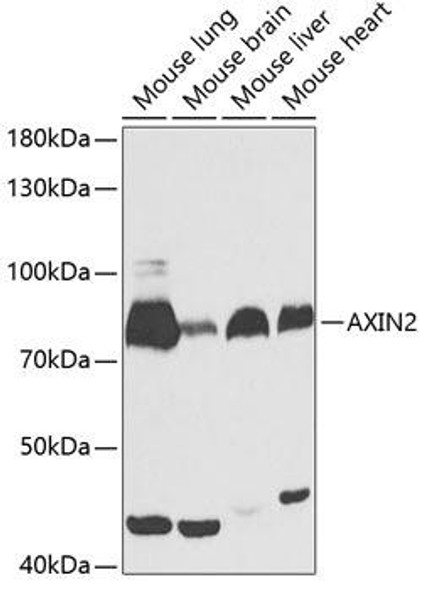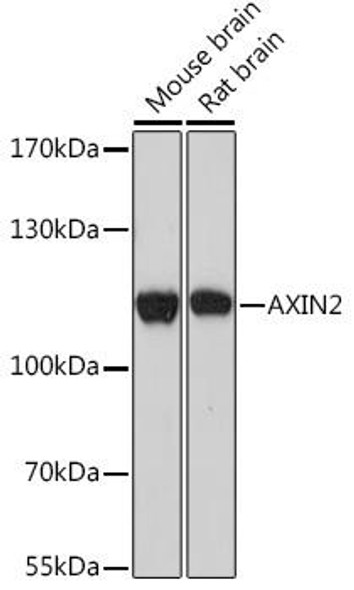Description
| Product Name: | AXIN2 Polyclonal Antibody |
| Product Code: | CAB21674 |
| Reactivity: | Human |
| Applications: | Immunofluorescence |
| Host Species: | Rabbit |
| Purification Method: | Affinity purification |
| Isotype: | IgG |
| Reactivity: | Human |
| Tested Applications: | IF/ICC, ELISA |
| Key Applications: | Immunofluorescence |
| Recommended Dilution: | IF/ICC 1:50-1:200 |
| Storage Buffer: | Store at -20°C. Avoid freeze / thaw cycles.Buffer: PBS with 0.01% thimerosal, 50% glycerol, pH7.3. |
| Cellular Location: | Cytoplasm |
The Axin-related protein, Axin2, presumably plays an important role in the regulation of the stability of beta-catenin in the Wnt signaling pathway, like its rodent homologs, mouse conductin/rat axil. In mouse, conductin organizes a multiprotein complex of APC (adenomatous polyposis of the colon), beta-catenin, glycogen synthase kinase 3-beta, and conductin, which leads to the degradation of beta-catenin. Apparently, the deregulation of beta-catenin is an important event in the genesis of a number of malignancies. The AXIN2 gene has been mapped to 17q23-q24, a region that shows frequent loss of heterozygosity in breast cancer, neuroblastoma, and other tumors. Mutations in this gene have been associated with colorectal cancer with defective mismatch repair.
| Immunogen: | A synthetic peptide corresponding to a sequence within amino acids 700-800 of human AXIN2 (NP_004646.3). |
| Sequence: | ACRRL AEVSK PPKQR CCVAS QQRDR NHSAT VQTGA TPFSN PSLAP EDHKE PKKLA GVHAL QASEL VVTYF FCGEE IPYRR MLKAQ SLTLG HFKEQ LSKKG N |
| Synonyms: | AXIL, ODCRCS |
| Calculated MW: | 94kDa |
| Observed MW: | Refer to figures |






